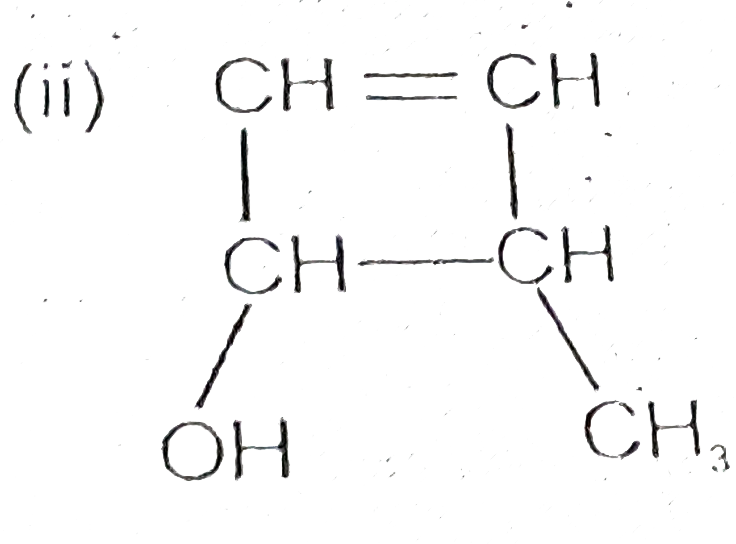Of the two alcohols, (a) CH2=CH−CH2OH and (b) CH2=CH−CH2−CH2OH, which one will react more easily with conc. HCl in the presence of ZnCl2?
CH2=CH.CH2OH
Related Playlists
- BOOK - ICSECHAPTER - ALCOHOLS, PHENOLS AND ETHERS EXERCISE - EXERCISE (PART-II Descriptive Questions) (SHORT ANSWER QUESTIONS)116videos
ALCOHOLS, PHENOLS AND ETHERS
- BOOK - ICSECHAPTER - ALCOHOLS, PHENOLS AND ETHERS EXERCISE - EXERCISE (PART-II Descriptive Questions) (LONG ANSWER QUESTIONS)20videos
ALCOHOLS, PHENOLS AND ETHERS
- BOOK - ICSECHAPTER - ALCOHOLS, PHENOLS AND ETHERS EXERCISE - EXERCISE (PART-I Objective Questions) (Correct the following statements)15videos
ALCOHOLS, PHENOLS AND ETHERS
- BOOK - ICSECHAPTER - ALCOHOLS , PHENOLS AND ETHERS EXERCISE - SOURCE BASED QUESTIONS4videos
ALCOHOLS , PHENOLS AND ETHERS
- BOOK - ICSECHAPTER - ALDEHYDES, KETONES AND CARBOXYLIC ACIDSEXERCISE - EXERCISE (PART-II DESCRIPTIVE QUESTIONS) ( LONG ANSWER QUESTIONS)478videos
ALDEHYDES, KETONES AND CARBOXYLIC ACIDS
Similar Questions
CH3.CH2CH2Claq.KOH−−−−→CH3CH2CH2OH The reaction is
View SolutionThe suitable reagent to convert CH3−CH=CH−CHO into CH3−CH2−CH2−CH2−OH
View SolutionA solution of aqueous of KOH hydrolysis CH3CHClCH2CH3andCH3CH2CH2CH2Cl. Which one of these is more easily hydrolysed.?
View SolutionThe IUPAC name of CH2=CH−CH2−OH is
View SolutionIUPAC name of CH2OH−CH2OH is
View SolutionCH3CH2−OH can be converted to CH3CH2CN by the following reactions :
View SolutionWrite its bond line formula
(i) CH3CH(OH)CH2CH2OH View Solution
View Solution
CH3−CH2−OH
In the given reaction A & B are respectively:View SolutionIn the given reaction
CH2=CH−CHO[X]−−→CH2=CH−CH2OH
[X] will beView SolutionGive IUPAC name for each of the following
CH2OHCH2CH2CH2OHView Solution


